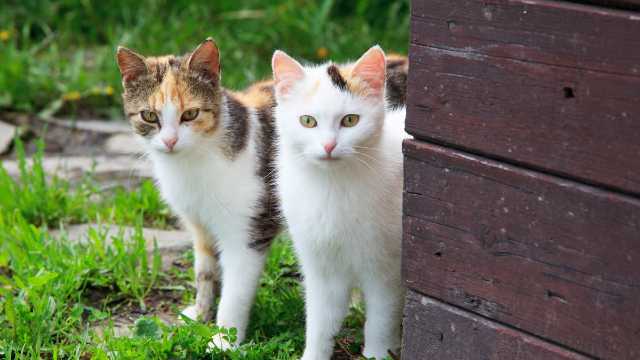By Carol Stiffler
When shops are closed and downtown is quiet, Newberry’s feral cat population is buzzing with activity. Fighting, hunting, and breeding, the animals get by with little help from people. Though their days and nights are difficult, the cats are successful enough to create waves of kittens that intensify the situation and sometimes overrun the local animal shelter.
But a small group of animal lovers have united to address Newberry’s homeless cat situation. Chuck Wieringa, Brenda Wallace, and Donna Hamilton are establishing a trap, neuter, return (TNR) program to sterilize the cats before returning them to their original location. The Newberry News is partnering with the group.
The group is working independently and their efforts are not part of any other organization. They need help. The team, which doesn’t have a formal committee name yet, is searching for a crew of people who care about animals, have the time or desire to volunteer, and a few people with trucks. Monetary donations or gifts of cat food will also help.
Anyone who can help with manpower, supplies, or a rugged vehicle is invited to meet at 6:30 p.m. on Thursday, September 21, in the Warren room at the American Legion. At the meeting, the group will discuss plans for setting and monitoring traps, bringing felines to the Newberry Animal Clinic for surgery, and care during recovery.
“Some of our community members feed stray cats,” Hamilton said. “If they can be part of the solution, that will really expand our base of volunteers.”
The Newberry Animal Clinic will handle the surgeries whenever possible, and the Pet Pals organization has a limited amount of funds available to cover those costs.
Newberry is home to at least four five cat colonies, spaced throughout town. The TNR crew have already trapped, neutered and returned 25 feral cats and kittens in the Newberry area this year. Other cat colonies have been identified and will be targeted in the future.
Sterilizing Newberry’s homeless cats would soon have an impact on the Luce County Animal Shelter, which takes in multiple stray or feral cat families each year. Shelter Director Gloria Caswell says the shelter currently has 47 cats, which is the most they’ve ever had.
“I’m turning people away,” Caswell said. “Those numbers would be bigger if we had the room and the people to take care of the cats.”
Feral kittens do warm up to humans with time and attention, and Caswell said her volunteers socialize and comfort the kittens so they’ll grow to be adoptable.
Feral cats usually can’t be tamed, she said, so they get fixed and returned to their original location.
It’s critical that the cats are returned to their original location, said Hamilton, pointing to research that shows that feral cats, like many wild predators, have territories. Rehoming a cat into another cat’s territory could lead it to injury or death.
Before any traps are placed in a neighborhood, announcements will be made and signs will be posted so cat owners will know to keep their cats indoors during the trapping period.
Everyone in the community who cares about animals or has concerns about is encouraged to attend the September 21 meeting.







